Thorsten
Active member
- Joined
- Dec 7, 2013
- Messages
- 785
- Reaction score
- 56
- Points
- 43
In case anyone is interested, that's me flying in my native habitat - Flightgear, where I'm part of the development team, and as it so happens, I'm currently involved in a spaceflight project.
We were contacted by researchers from project PoSSUM who aim at using the XCOR Lynx spaceplane to study noctilucent clouds in Alaska and asked about the possibility of using Flightgear as a platform. Till we get any data for the Lynx, we're using the X-15 as a stand-in for suborbital ballistic trajectories, so I've been busy coding the proper rendering of extremely high altitude clouds as well as the suborbital experience while others have been lending a hand bringing the X-15 up to speed.
Thus, I spent quite a bit of sim time doing suborbital hops, scratching at the edge of space in the last few days.
Here's a few impressions how Flightgear handles suborbital hops. It's not something it was originally designed for, but it's a fairly flexible and modular framework, so one can make it work.
Flight dynamics is handled by JSBSim, which is an OpenSource flight dynamics package benchmarked against NASA flight dynamics codes.
Rendering is handled by Atmospheric Light Scattering (ALS) which is an OpenGL shader framework I've developed computing light propagation through the atmosphere in real time which can accomodate varying aerosol and dust densities.
The terrain is the Flightgear World Scenery 1.0, compiled from public domain landcover and elevation data, augmented by procedural terrain texturing handled by ALS.
Separated from the motherplane, shortly before igniting engines:
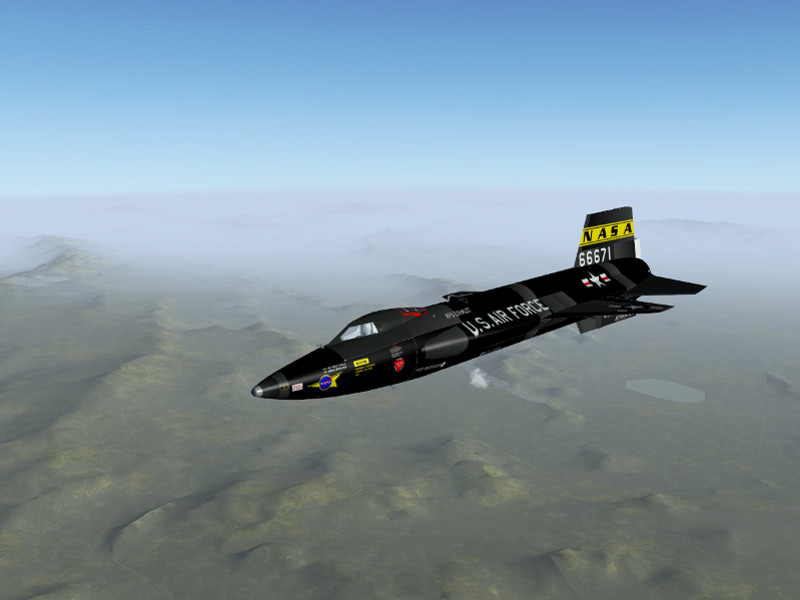
Steep 45 degree climb with full throttle for a high altitude profile:
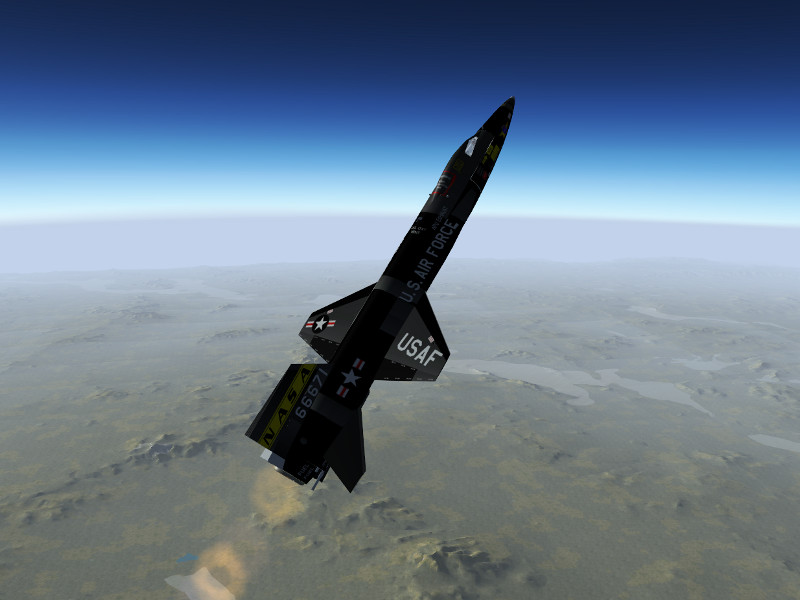
Ballistic climbing phase over Nevada - airfoils start losing effectiveness, and I need to RCS to stabilize the attitude:
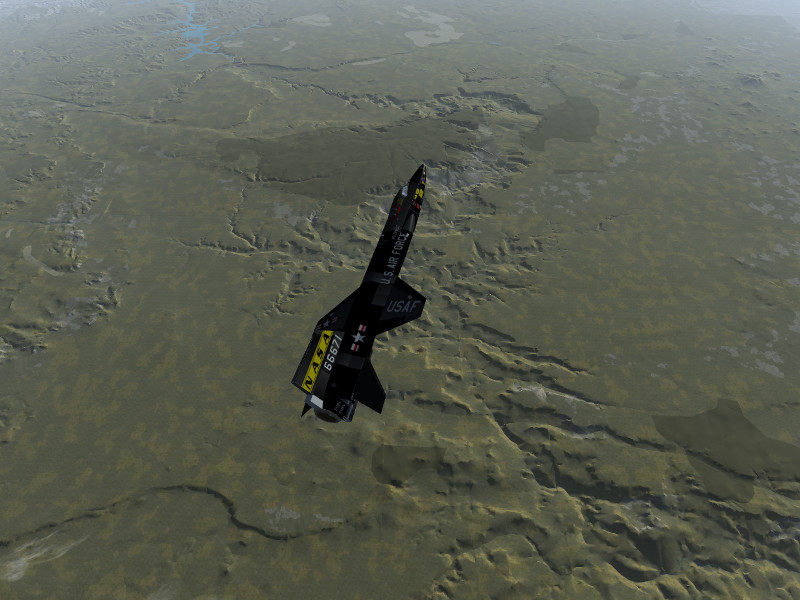
330.000 ft at arc top above Nevada - Edwards AFB can be seen just at the lower edge of the picture:
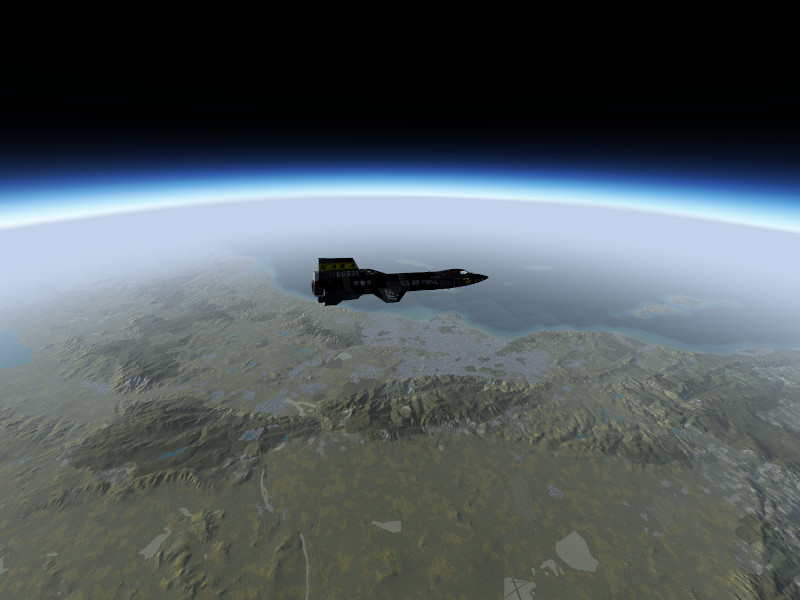
Falling back down:
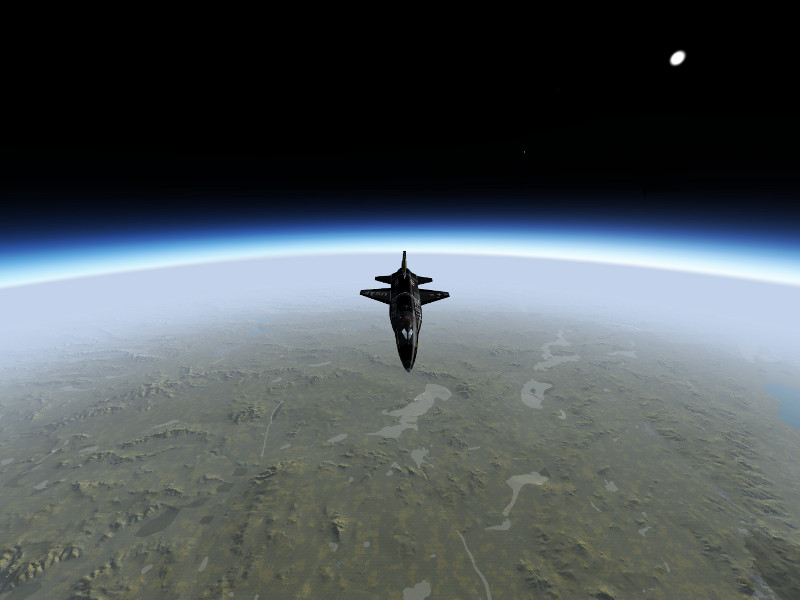
The view from the cockpit is much more interesting on the downward leg of the trip...
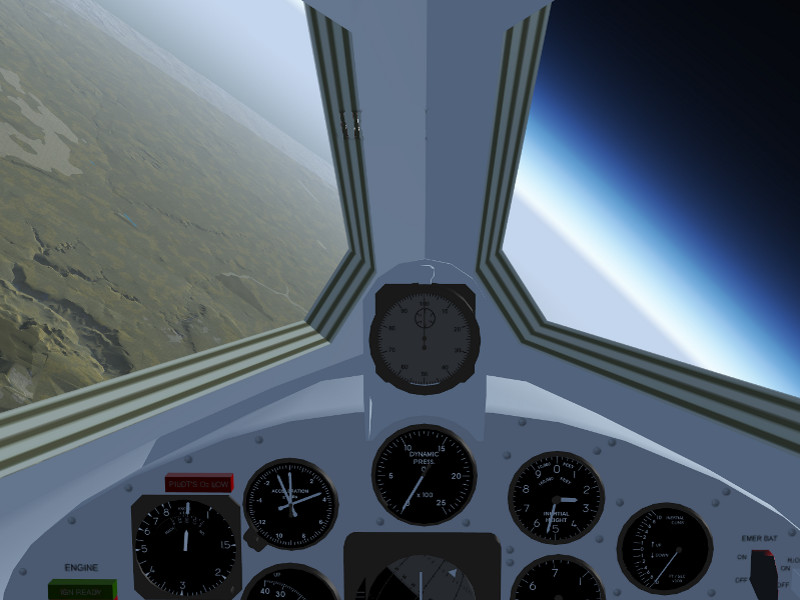
From a high altitude profile, the X-15 falls rather steeply, and the g-forces once I pull out of the dive will be brutal - on this flight I got 7 - 8 g, leading to a black-out.
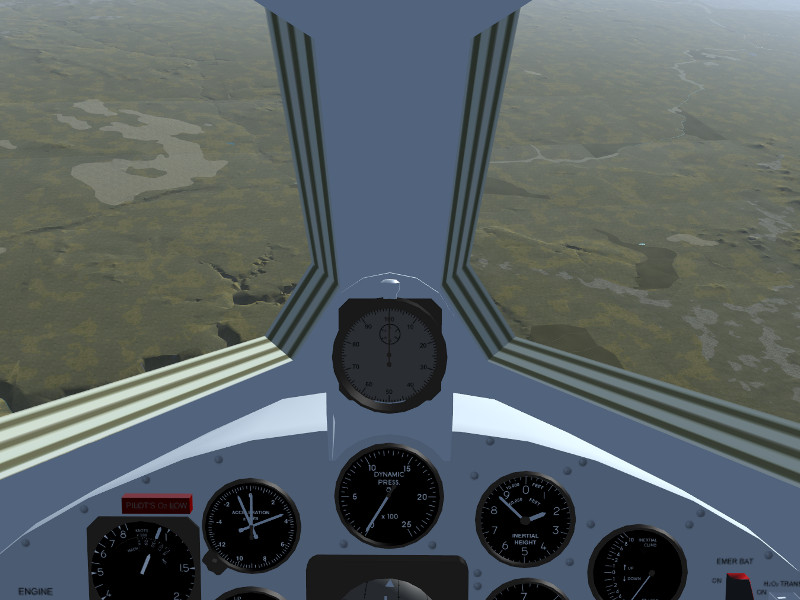
Outside view of the X-15 falling downward:
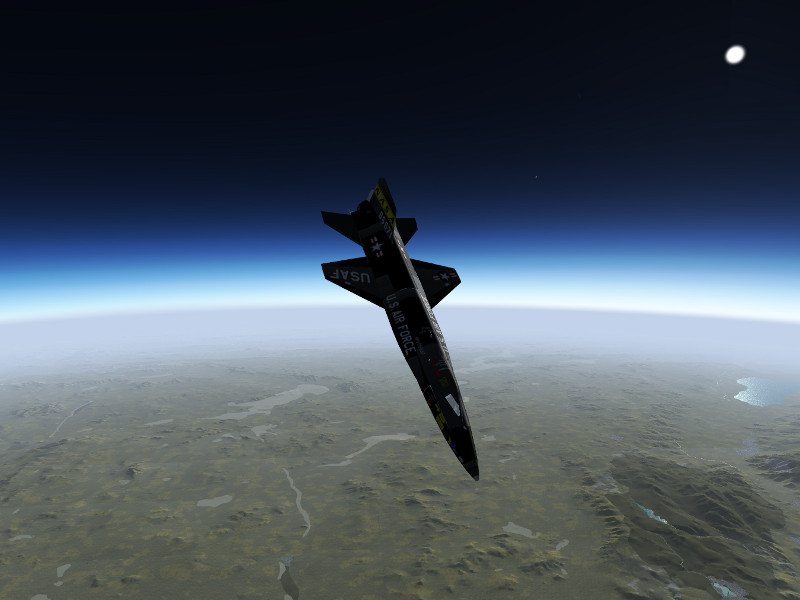
After pulling out of the dive, still above some Cirrus layer which must be around 30.000 ft:
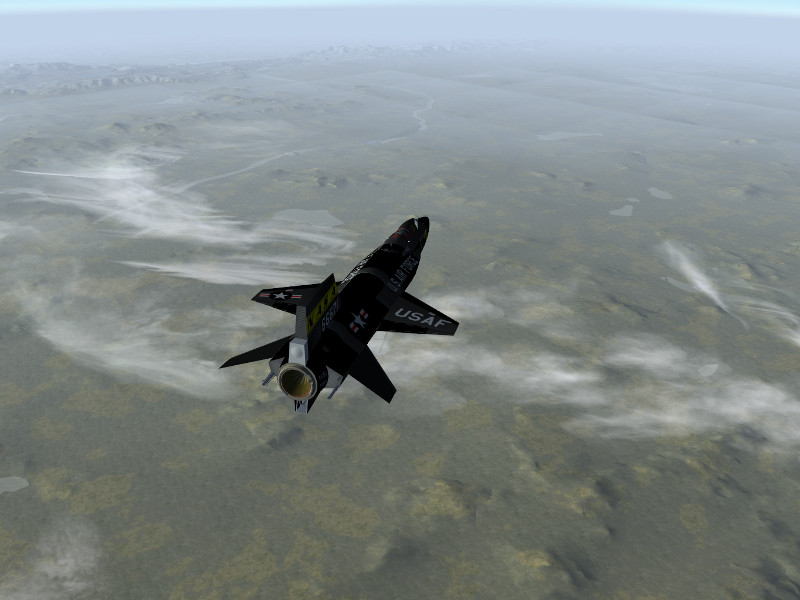
Approach to Edwards AFB which is down to the right on the picture:
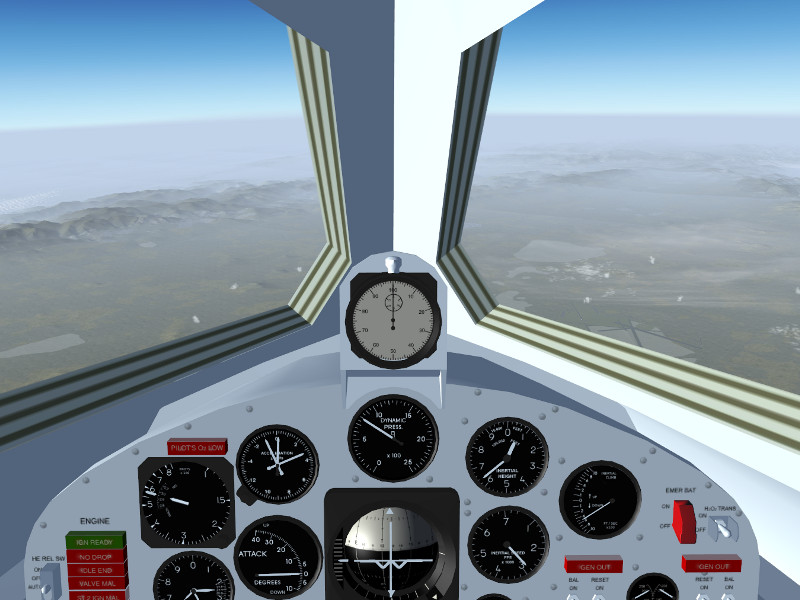
Turning into final approach:
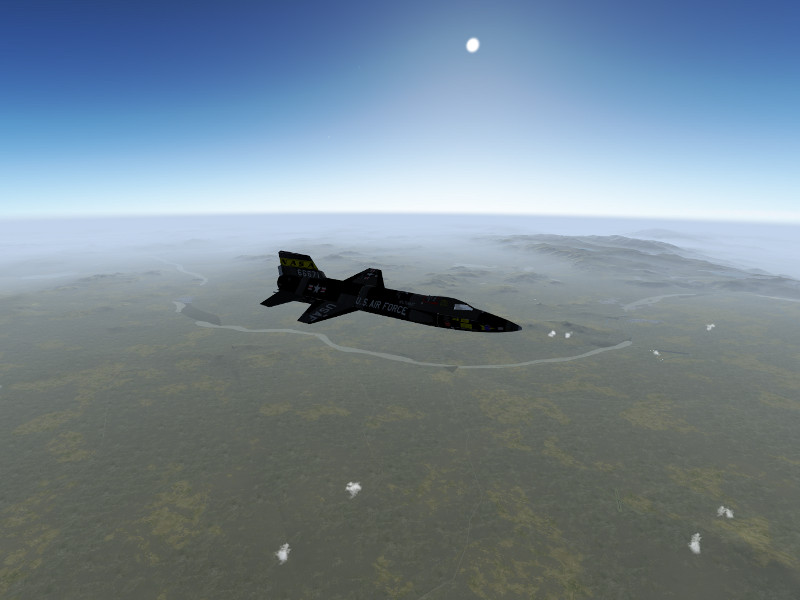
Gear and skids out, and preparing to land in a dry lakebed:
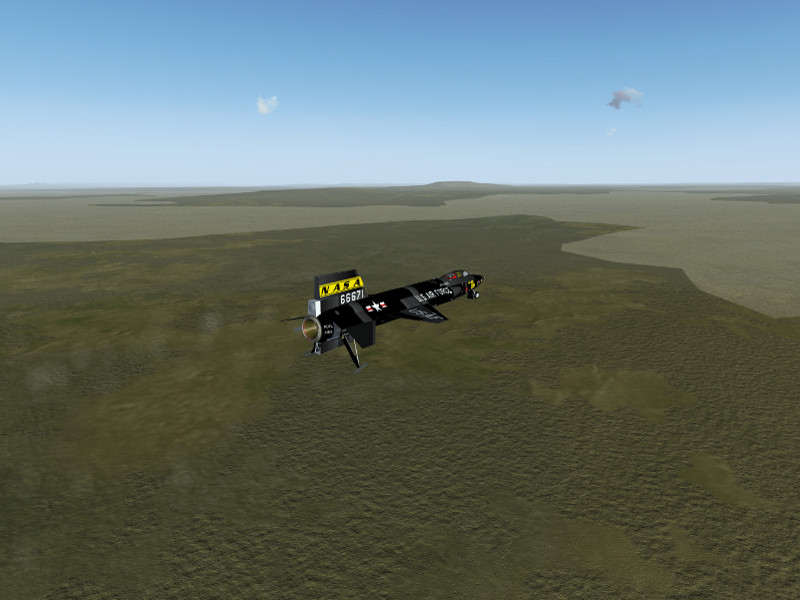
Made it safely down. The beauty of procedural texturing strategies - ALS just generates the details as one gets closer, for aircraft on the ground it can do cm-sized detail resolution, and just stops doing this when seen from large distance, so one can have both broad vistas from space and individual sand ripples from close up - everywhere in the world.
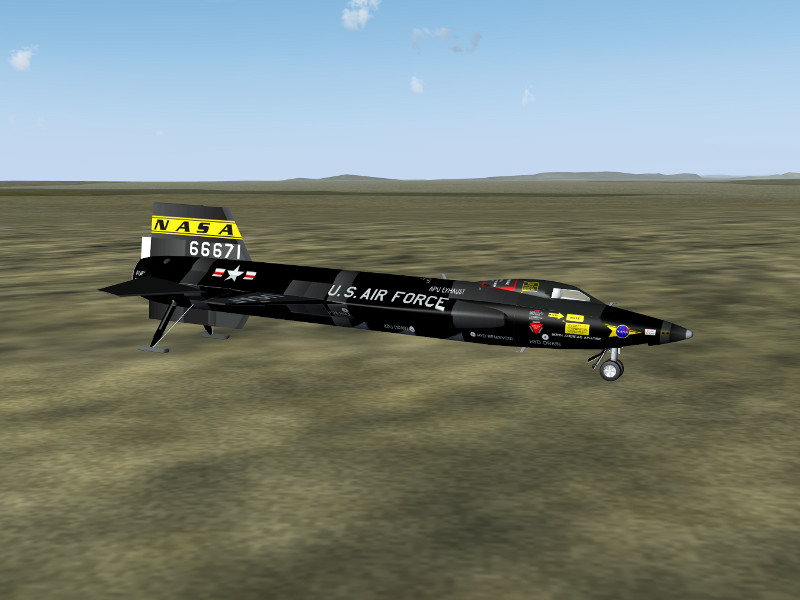
That's a pic from a high speed profile I tried where the X-15 levels off at 120.000 ft and I just tried to get as fast as possible.
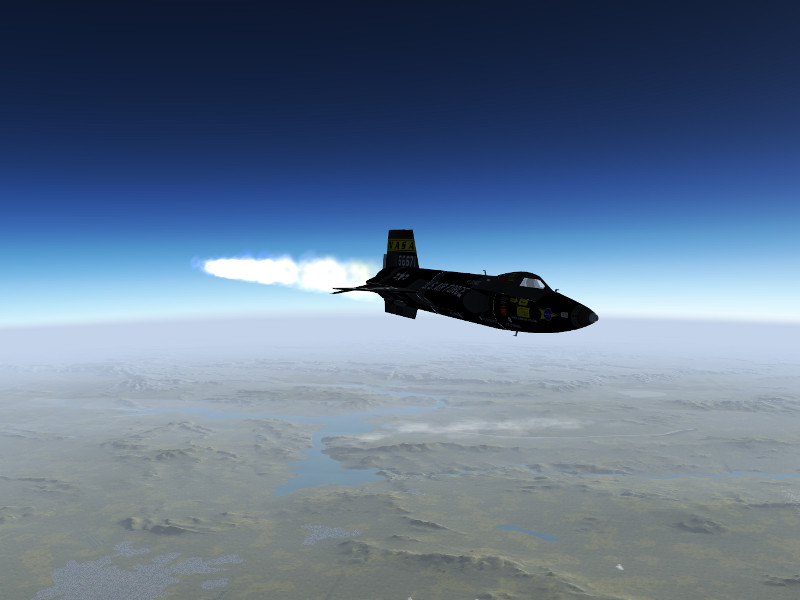
Enjoy!
It's not Orbiter, but just as I liked to talk about my shuttle flights with Orbiter at the Flightgear forum, I like to describe spaceflight I do in a different simulation.
We were contacted by researchers from project PoSSUM who aim at using the XCOR Lynx spaceplane to study noctilucent clouds in Alaska and asked about the possibility of using Flightgear as a platform. Till we get any data for the Lynx, we're using the X-15 as a stand-in for suborbital ballistic trajectories, so I've been busy coding the proper rendering of extremely high altitude clouds as well as the suborbital experience while others have been lending a hand bringing the X-15 up to speed.
Thus, I spent quite a bit of sim time doing suborbital hops, scratching at the edge of space in the last few days.
Here's a few impressions how Flightgear handles suborbital hops. It's not something it was originally designed for, but it's a fairly flexible and modular framework, so one can make it work.
Flight dynamics is handled by JSBSim, which is an OpenSource flight dynamics package benchmarked against NASA flight dynamics codes.
Rendering is handled by Atmospheric Light Scattering (ALS) which is an OpenGL shader framework I've developed computing light propagation through the atmosphere in real time which can accomodate varying aerosol and dust densities.
The terrain is the Flightgear World Scenery 1.0, compiled from public domain landcover and elevation data, augmented by procedural terrain texturing handled by ALS.
Separated from the motherplane, shortly before igniting engines:

Steep 45 degree climb with full throttle for a high altitude profile:

Ballistic climbing phase over Nevada - airfoils start losing effectiveness, and I need to RCS to stabilize the attitude:

330.000 ft at arc top above Nevada - Edwards AFB can be seen just at the lower edge of the picture:

Falling back down:

The view from the cockpit is much more interesting on the downward leg of the trip...

From a high altitude profile, the X-15 falls rather steeply, and the g-forces once I pull out of the dive will be brutal - on this flight I got 7 - 8 g, leading to a black-out.

Outside view of the X-15 falling downward:

After pulling out of the dive, still above some Cirrus layer which must be around 30.000 ft:

Approach to Edwards AFB which is down to the right on the picture:

Turning into final approach:

Gear and skids out, and preparing to land in a dry lakebed:

Made it safely down. The beauty of procedural texturing strategies - ALS just generates the details as one gets closer, for aircraft on the ground it can do cm-sized detail resolution, and just stops doing this when seen from large distance, so one can have both broad vistas from space and individual sand ripples from close up - everywhere in the world.

That's a pic from a high speed profile I tried where the X-15 levels off at 120.000 ft and I just tried to get as fast as possible.

Enjoy!
It's not Orbiter, but just as I liked to talk about my shuttle flights with Orbiter at the Flightgear forum, I like to describe spaceflight I do in a different simulation.
